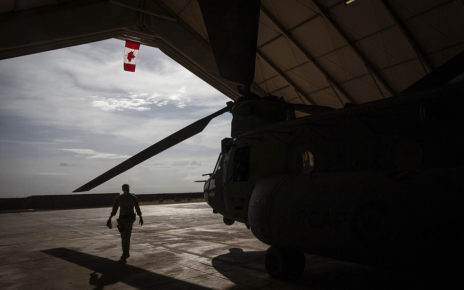On June 20-28, 2016, elements of the Canadian Armed Forces (CAF) participated in this year’s edition of the United States Southern Command-led Exercise Tradewinds in Jamaica. Earlier in the month, Canadian military personnel also participated in an initial phase of Exercise Tradewinds in Grenada. This training involved developing the Jamaica Defence Force’s (JDF) capacity to combat transnational organized crime. In fact, organized crime has become such a serious threat to Jamaican security that the country experienced 1,192 murders in 2015, very high for Jamaica’s population size, but certainly an improvement over the 1,674 murders seen in 2005.
Tradewinds 2016 was heavily focused on the exchange of best practices among maritime forces, and with good reason. According to the International Narcotics Control Board (INCB), Jamaica has emerged as the largest producer and exporter of cannabis in Central America and the Caribbean, accounting for approximately one-third of the region’s marijuana exports. Jamaica has also become an important transit hub for cocaine trafficked from Colombia and elsewhere in Central America to the US and Canada. Jamaican authorities seized 1,230 kilograms of cocaine in 2013 but the INCB notes that significant volumes continue to pass successfully through Jamaica bound for North America.
This is in large part due to the JDF’s lack of maritime capabilities. The JDF Coast Guard currently can only boast three County-class Offshore Patrol Vessels (OPVs), each manufactured by Dutch-based Damen Shipyards Group and with a displacement of roughly 250 tonnes. These unarmed patrol vessels have also been shared with the Jamaican Fire Brigade since 2012 in order to fill in for a lack of fireboats. Beyond this, the JDF is believed to have four more fast patrol craft, small in size and similarly unarmed. Yet Jamaica has more than 1,000 kilometres of coastline to patrol. With such a small number of vessels available, there are inevitably huge gaps in Jamaica’s defences for transnational criminal networks to exploit.
Beyond meeting Canadian defence needs by combating narcotics trafficking, there are other reasons for Canada to take an active interest in Jamaica’s security situation. The two countries enjoy a robust trade relationship, with Canadian exports to Jamaica totaling $120.7 million in 2014 and Jamaican exports to Canada reaching $264.6 million the same year. Among the member states of the Caribbean Community (CARICOM), only Trinidad and Tobago has a larger volume of two-way trade with Canada.
Canada is also home to a substantial Jamaican diaspora, estimated at approximately 300,000 people. More than 6,000 Jamaicans find work in Canada each year under existing labour mobility programs. Canada was among the first countries to establish diplomatic relations with Jamaica following the latter’s independence from the United Kingdom in 1962, although there was some discussion in the late 19th century as to whether Jamaica might enter some form of political union with Canada, potentially entering Confederation as a Canadian province.
With such ties, it is no wonder the Royal Canadian Navy (RCN) and Canadian Army participated so effectively in Tradewinds. The Joint Information Operations Centre (JIOC) built for the JDF by Canada offers a more sustained form of support to Jamaica’s defence capabilities, integrating information from Jamaican military and civilian agencies so as to ensure a more coordinated response to non-traditional security threats, such as organized crime, terrorism, and natural disasters.
It will certainly require more international engagement, as well as greater domestic investment in Jamaica’s security apparatus, to strike some decisive blows against the organized crime networks that have exploited to Jamaica’s vulnerability. But what Canada has offered thus far has earned the country respect in the Caribbean, as demonstrated by a 2012 editorial in the Jamaica Observer, written as then Jamaican Prime Minister Portia Simpson-Miller undertook an official visit to Canada: “Canada has been a true friend, nay, more like a big brother to Jamaica.”
Photo: Canadian Clearance Divers and other staff involved with the training of the Caribbean Divers pose underwater for a group photo at the end of Exercise TRADEWINDS in Discovery Bay Jamaica (2016), by Sgt Yannick Bédard, Canadian Forces via Combat Camera. Licensed under CC IS01-2016-0003-127.
Disclaimer: Any views or opinions expressed in articles are solely those of the authors and do not necessarily represent the views of the NATO Association of Canada.




